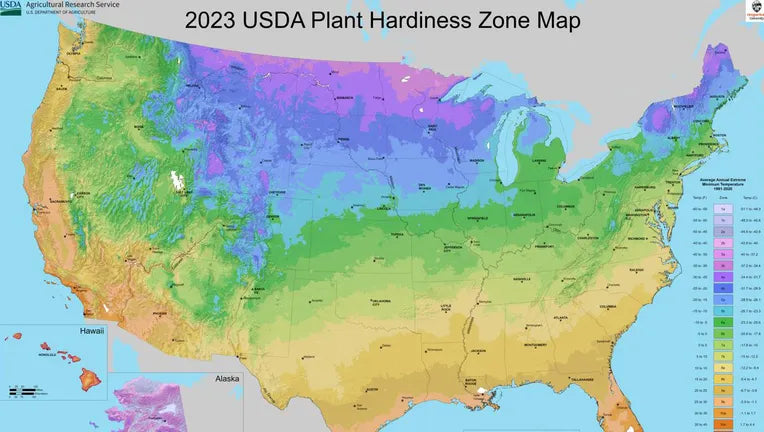Gardening is as much about timing and location as it is about passion and care. One of the critical tools at a gardener's disposal is the knowledge of Plant Hardiness Zones, a system developed to help gardeners understand what plants can thrive in their local climate. This guide will delve into what hardiness zones are, why they matter, and how you can use this information to cultivate a flourishing garden.
Understanding Plant Hardiness Zones
The concept of Plant Hardiness Zones was devised by the United States Department of Agriculture (USDA) as a standard to guide gardeners and growers on which plants are most likely to thrive in a particular location. The map divides North America into 13 primary zones based on the average annual minimum winter temperature, with each zone representing a 10-degree Fahrenheit difference in minimum temperature.
Why Hardiness Zones Matter
- Selecting the Right Plants: Knowing your zone helps in choosing plants that can survive the winter in your area. It's a fundamental step in ensuring gardening success.
- Gardening Planning: Understanding your zone's temperature range can help you plan planting times and protect sensitive plants from cold damage.
- Climate Adaptation: As climates change, hardiness zones shift as well. Keeping informed helps you adapt your gardening practices to changing environmental conditions.
How to Find and Use Your Hardiness Zone
- Locate Your Zone: Visit the USDA's interactive Plant Hardiness Zone Map online. Enter your ZIP code or explore the map to find your specific zone.
- Plant Selection: When purchasing seeds or plants, check the hardiness zone information on the packaging or catalog description. Choose plants rated for your zone or colder to ensure they can withstand your local winter.
- Consider Microclimates: Your garden might have microclimates—small areas that are slightly warmer or cooler than the general zone. Use these to your advantage to grow plants that might be slightly out of your zone's range.
Tips for Gardening Across Different Zones
- Zone Pushing: Interested in a plant that's not rated for your zone? Try planting it in a protected spot in your garden, use mulch for insulation, or grow it in a container that can be moved indoors during winter.
- Season Extenders: Utilize cold frames, hoop houses, or greenhouses to extend your growing season and experiment with plants from adjacent zones.
- Stay Informed: Keep track of any changes in hardiness zones and be mindful of unusual weather patterns that might affect your gardening decisions.
While hardiness zones provide a valuable guideline, they're not the only factor determining plant success. Soil quality, sunlight, moisture, and care also play crucial roles. However, by starting with plants suited to your zone, you're laying a strong foundation for a vibrant and productive garden.
Conclusion
Plant Hardiness Zones are an essential tool for anyone looking to create a thriving garden. By understanding and utilizing this system, you can make informed decisions about which plants will best suit your environment, leading to a more successful and satisfying gardening experience. Remember, gardening is a journey of learning and growth, and hardiness zones are just one part of the map guiding you to your lush, green destination. Happy gardening!

